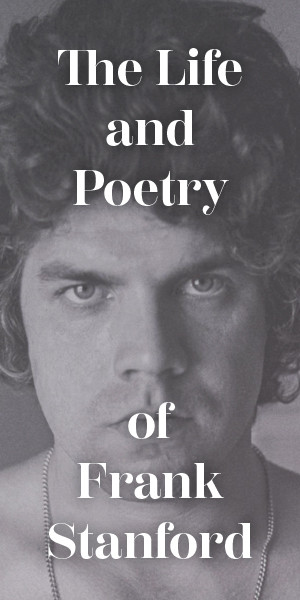Searching for Miss Willie
Following the Blues Highway to my step-grandmother’s grave
By Anthony Hicks
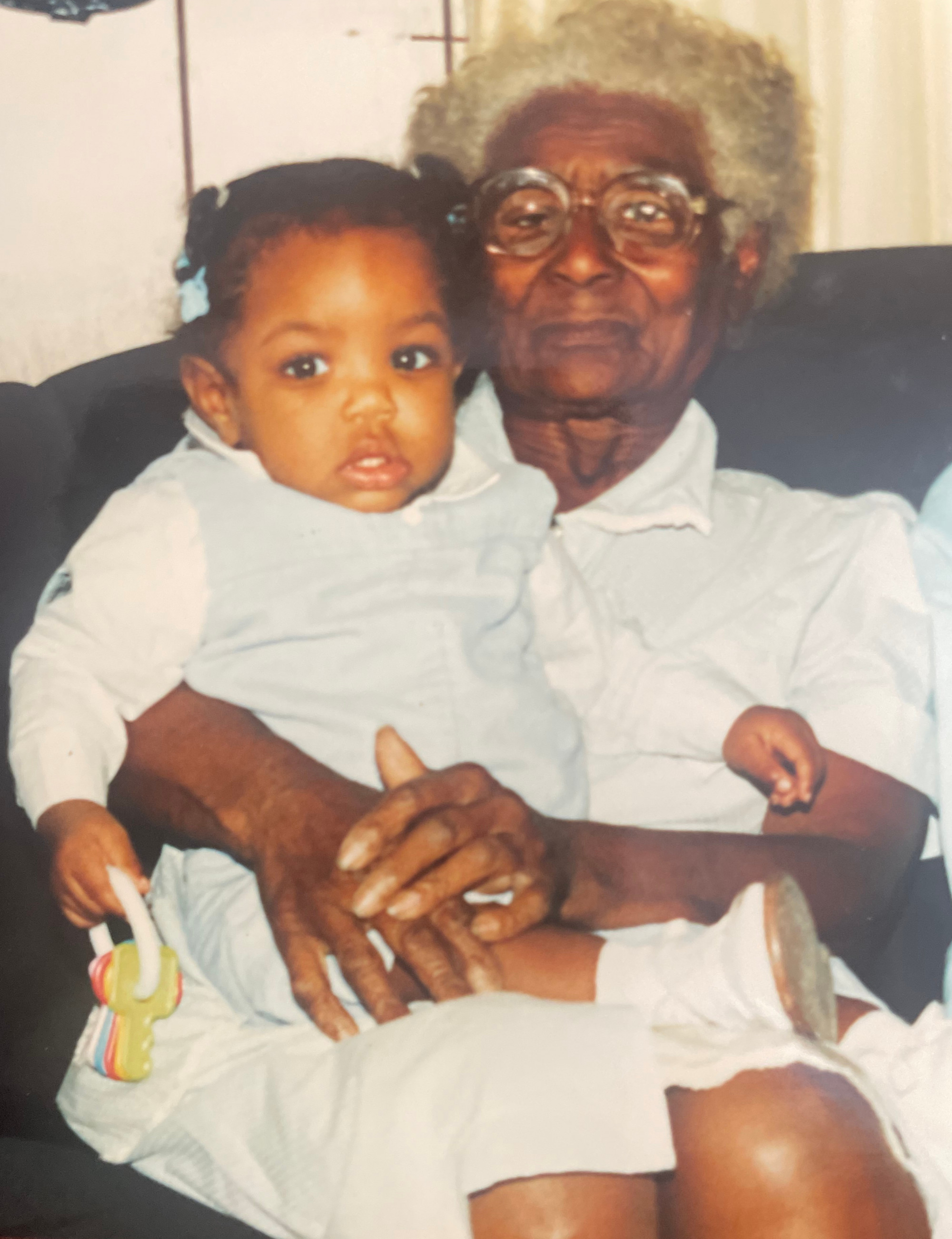
Courtesy of Author
The rising sun glazes the tops of towering hardwood trees as I set out on Highway 61 South from Memphis through the Mississippi Delta. It’s seven o’clock in the morning in early November. I’m on the famed Blues Highway, making an over three-hundred-mile trip to find the gravesite of a woman who helped raise me.
The six-hour journey to northwest Louisiana is an act of faith. Until I see the place where my step-grandmother is laid to rest, her death won’t be settled for me. I did not attend her funeral and have never visited her grave in the twenty-five years she’s been deceased—failings that ebb and flow but always find the surface.
She was laid to rest away from her East Arkansas roots after going to live with one of her sons in Benton, a town north of Shreveport. She died on December 16, 1999, and was buried in Benton Community Cemetery, officially listed by the state as Benton Colored Cemetery. Her son died in Kansas City, Missouri in 2001.
Mae Willie Strickland was born in Wynne, Arkansas on July 25, 1910. She was a Bible verse-quoting woman who never had many material trappings, didn’t drive a car or ever own her own home but cherished me and my siblings. Headed down the Blues Highway made famous by Delta blues musicians, I carry the regret which I hope will lead to a measure of reconciliation by finding her grave.
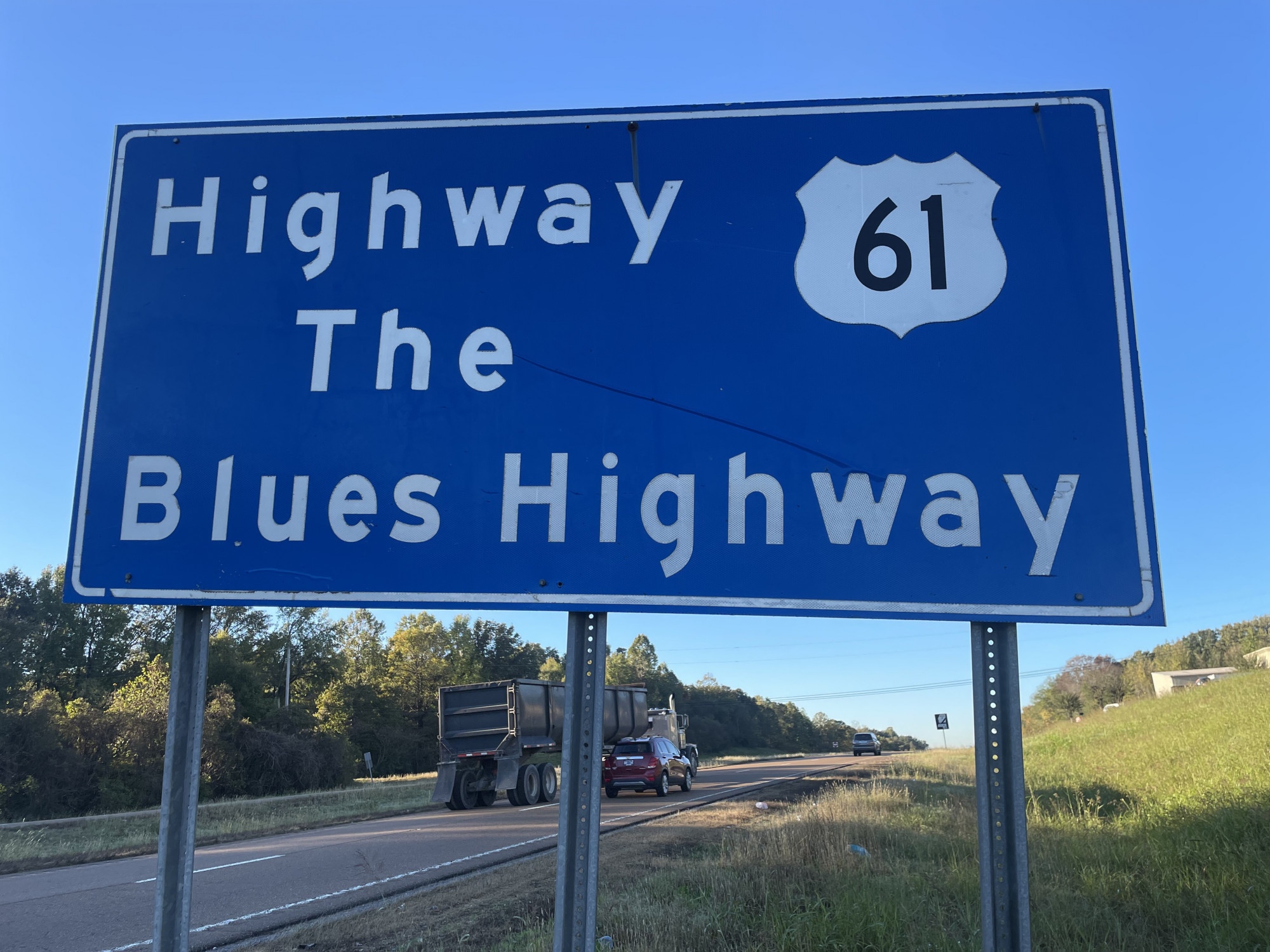
Courtesy of Author
Morning rushes past. Through my car window, I see that the fall cotton harvest is nearly complete. I drive past fields of machine-plucked cotton stalks and endless swaths of freshly turned chocolate-brown soil. The fertile land prepares to wait out winter for its spring rebirth.
Newly tilled, perfectly symmetrical furrows stretch out of view. Massive round modules of cotton bales color the landscape wrapped in yellow, blue, and pink polyethylene cover for transport to gins. Silver grain bins sprout from the tableland like hulking metallic mushrooms reflecting in the sun while some stand old and wan.
At Greenville, I cross the Mississippi River into Arkansas and travel further south to connect with I-20 for the drive to Shreveport. Once there, I will veer north fifteen minutes on State Highway 3 to the Bossier Parish cemetery.
What kind of person was this woman whose trail I follow? She was fiercely independent, outspoken, and caring. On some winter mornings at the school bus stop on our street, she built fires in an oil drum to keep children warm while they waited for the bus. Ever the disciplinarian, in one hand she held a long “switch” pulled from an overgrown hedge bush to maintain order.
She boasted a sixth sense bordering on clairvoyance. “I saw it,” was a frequent refrain she used to make people aware that she had foreknowledge of an important event. She was adamant about obtaining an education—“Get something in your head,” she preached. She was known for her many axioms. An often-repeated one was, “A leopard don’t change its spots.” It was a way of telling my siblings and me to be wary of people’s ulterior motives. She had a reservoir of choice cusswords she didn’t hesitate to use if riled.
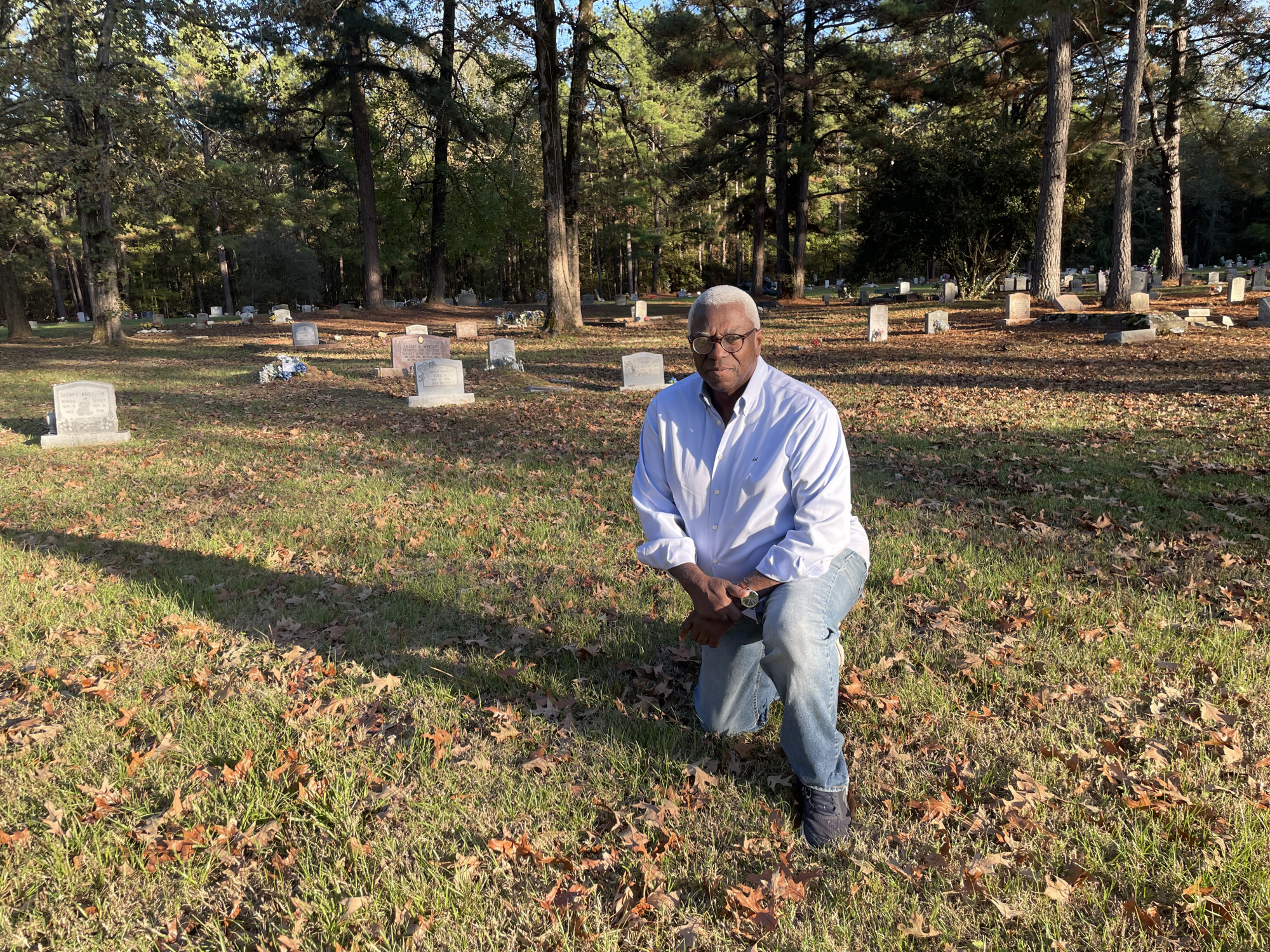
She avidly believed in folk remedies, like placing a string of white potatoes around my neck to ward off a fever. I don’t recall the ailment she was trying to cure when I was an infant and she briefly placed me inside a woodburning cookstove oven. It thrilled her to recount that story.
Miss Willie was not a biological relative. For a time my late mother was married to her son who left Arkansas for Louisiana. Mom was sixteen when they married. Miss Willie never stopped being supportive of her long after the marriage ended. She helped care for my siblings and me from when I was a boy in the 1960s to my college years in the 70s at Arkansas State University. I anxiously awaited the homemade fried peach pies she mailed me at the ASU post office.
She was a part-time tutor, nanny, and nurse for my mother’s children. She monitored my homework and taught me how to solve crossword puzzles, fueling a lifelong interest in discovering new words. She consoled me the summer before my final year of college after an accident at a summer factory job crushed most of my right hand, leaving only the thumb and index finger.
Following surgery and a week in Baptist Hospital in Memphis, Miss Willie helped my mother bring me back to health, nourished my spirit, and kept me focused on returning to ASU to finish my journalism degree. It was an uncertain period of my young life when I wondered if I’d still be able to use a typewriter and reach my goal of becoming a newspaper reporter.
I earned my journalism degree and spent nearly ten years reporting for newspapers, including the Arkansas Gazette and the Memphis Commercial Appeal before working thirty years as a public relations professional.
A patchwork of memories resurfaces as my car wends through farmland and delta towns. My earliest recollection of her was a day in a cotton field. She was picking cotton with other field workers while pulling me along her row on top of her cotton sack. What an unkind quirk of fate it would be if I went to my grave without ever paying homage at hers. I wonder if there is an expiration date on making amends.
I reach Shreveport in mid-afternoon. Shortly after three o’clock, I am walking through the Benton Community Cemetery on Highway 162. Across the street is an elementary school. Parents circle their cars for class dismissal.
The small graveyard is green and tidy. Brightly colored flowers and exposed dirt signal recent burials. It is quiet and serene. There is the crunch of my footfall on dry leaves and pine tree needles as I navigate uneven turf and dodge anthills jutting nearly a foot from the ground like mounds of dark coffee grind. A thick stand of pine and cedar trees ring the cemetery.
Streaks of sunlight sparkle through the tree branches as I walk past the two hundred or so headstones searching for her name. My heart races when the name Willie Mae catches my eye. My hope sags when I quickly realize it’s not her name. I see two or three more Willie Maes but no Mae Willie. There are graves with no markers. Finality is elusive without seeing her name etched in stone.
It is eighty degrees. I’m hot and perspiring in long sleeves. I roll them up and keep walking and reading, row by row, sometimes stepping back to re-read names, or twisting my neck and torso for a closer look. Some headstones are sunken into the earth or lean awkwardly askew.
For forty-five minutes I check and double-check names and dates. I want to record the visit before I leave for the afternoon. Not far away a woman adjusts a youth’s headgear for what appears to be lacrosse practice on the adjacent school athletic field.
I ask the woman to take a cell-phone photo of me in the cemetery. She is courteous and obliges. I tell her why I am there and that I can’t find the person I’m looking for. She volunteers to help search. I say it’s not necessary. I tell her I will try again in the morning. She insists on helping. “That would be an imposition,” I implore, but she’s not fazed.
“I know how important it is,” she says, her eyes filled with compassion, explaining that she has recently lost loved ones. I thank her. I see a weather-worn sign anchored in the ground. It says: Headstone Engraving and Gravesite Clean-Up. I write down the contact name and telephone number.
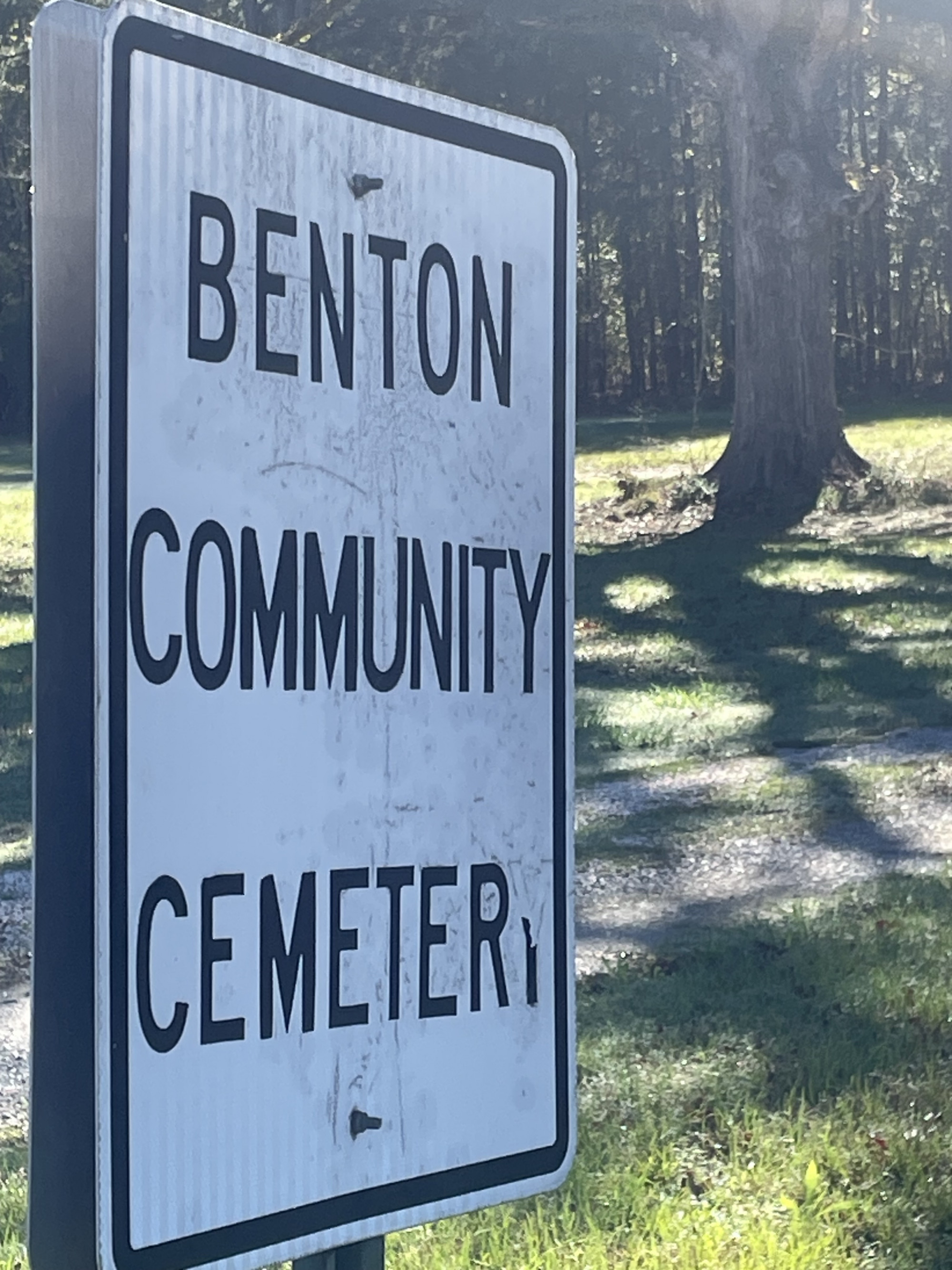
Courtesy of Author
I return to the graveyard after a night’s rest and reflection. The postcard morning is as spectacular as the previous one: crisp, clear, and cloudless. Radiant sunshine spills through trees. After more searching, I follow my news reporter instincts and call the cemetery clean-up service phone number. The person I reach tells me how to contact the cemetery association’s president.
We talk and I share information about Miss Willie. He says he knows someone who may have a diagram of the graveyard that could help locate the spot where Miss Willie is buried. He says he will get back to me with any information he finds. It is not the finality I sought but speaking with the person in charge of the cemetery is my first shred of hope.
I say a silent prayer and leave the cemetery. I commit to returning regularly if only to channel her spirit. By ten o’clock, the morning sun is in full glare. Soon I’m on I-20 headed for Vicksburg and the drive north through the lower delta’s boundless earth tones and back up the Blues Highway. My regret is soothed.
It’s nightfall when I return to Memphis. The morning’s bright light exchanged for twinkles in a dark sky. My mind is full. I see Miss Willie wide-eyed, beaming an all-knowing smile, assuring me that she knew I was coming to find her. She would say, “I saw it.”




